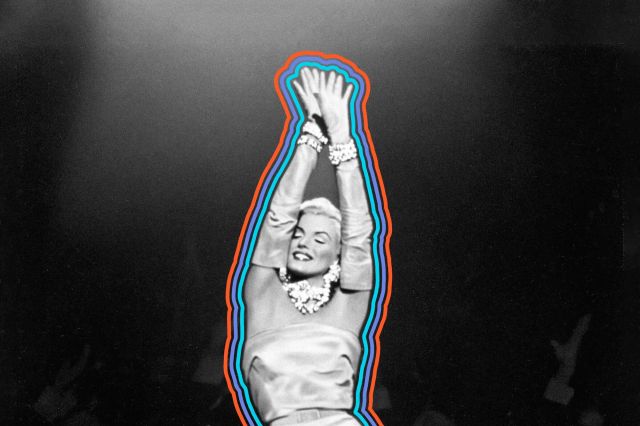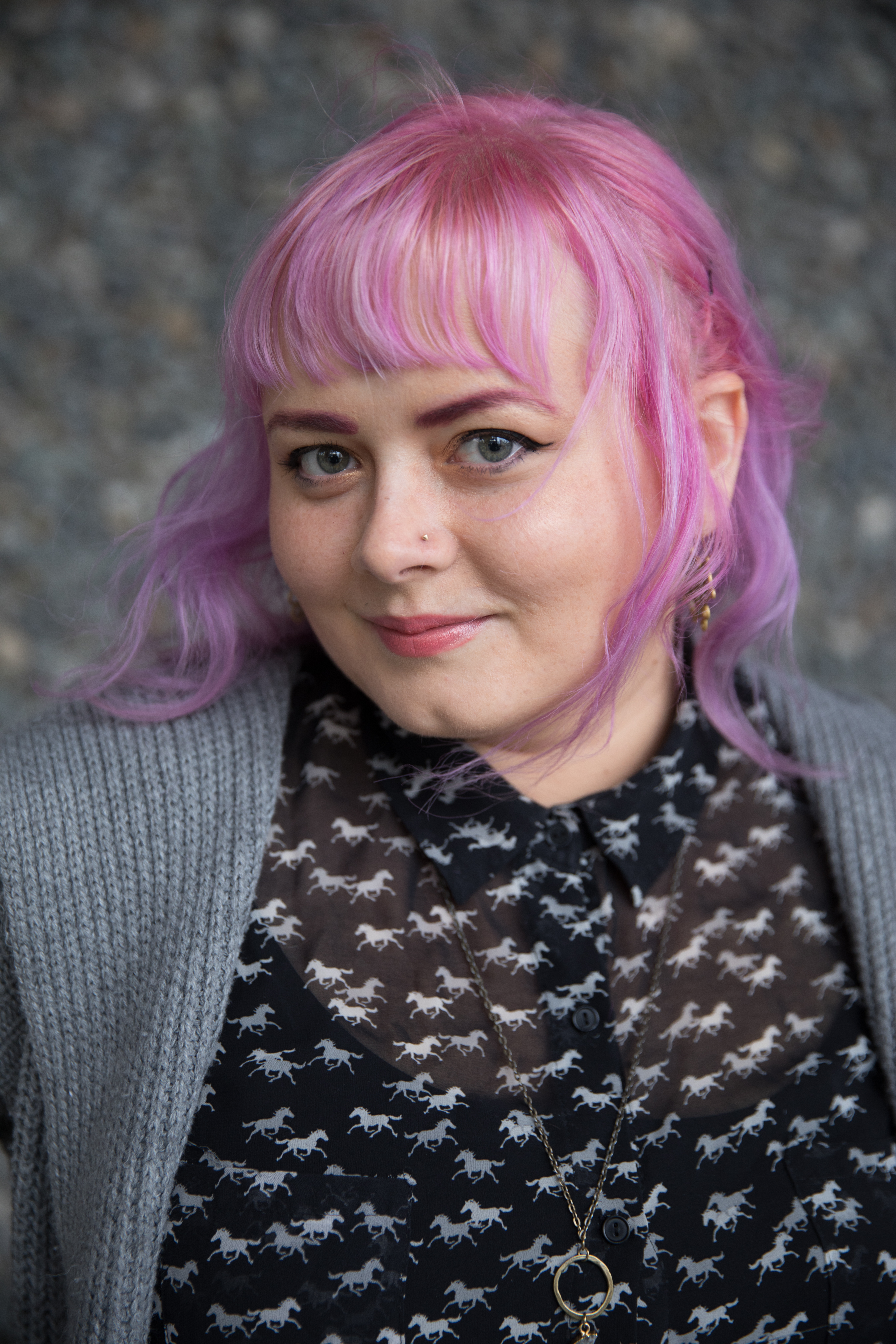
Marilyn Monroe’s Stage Name Came From a Broadway Star
Marilyn Monroe had several different names before adopting her legendary stage name, and you might even know her real first name thanks to the opening lyrics of Elton John’s 1973 tribute, “Candle in the Wind.” Monroe was born Norma Jeane Mortenson in 1926, but her mother and father soon divorced, and she was baptized under the name Norma Jeane Baker (her mother’s last name).
The future actress was known as Norma Jeane Dougherty during her brief first marriage to police officer James Dougherty, which began in 1942. (More on that below.) When Monroe signed her first studio contract with 20th Century Fox in 1946, an executive named Ben Lyon thought there were too many ways to pronounce “Dougherty,” so the actress suggested Monroe, a last name from her mother’s side of the family, instead. Lyon added the first name “Marilyn” after Broadway star Marilyn Miller, with whom he had starred in the 1931 film Her Majesty, Love, because Monroe reminded him of Miller. The rest is history.

She Was 16 When She Got Married for the First Time
After a turbulent childhood impacted by her mother’s schizophrenia, Monroe lived with a series of foster families. When the star was just 15 years old, she became romantically involved with then-20-year-old James Dougherty. Although Dougherty claimed he was uneasy about her age at first, the pair got married soon after Monroe’s 16th birthday. The star wrote in her autobiography My Story — published in 1974 over a decade after her tragic death — that the union “brought [her] neither happiness or pain,” adding that she was grateful that it had “ended forever [her] status as an orphan.”
The couple grew apart when Dougherty was sent overseas as a Merchant Marine, and Monroe started her modeling career. Their divorce was finalized in 1946, just as she was beginning her ascent to stardom. Dougherty, who married twice more and died in 2005, said he never actually saw any of Monroe’s movies in the theater because it was a touchy subject in his second marriage.

Her First Job Was Building Drones
Monroe’s late teens coincided with World War II, and at age 18, she started working 10 hours a day for a company called Radioplane, which manufactured small, unmanned aircraft used to drop explosives. Her job was inspecting the aircraft parachutes and spraying them with fire retardant.
It was here at the drone factory that Monroe got her start in modeling — a career she hadn’t considered before. A photographer with the United States Army was assigned to take photos of women in war production (inspired by “Rosie the Riveter”), and one of those photos — of a smiling Monroe holding a propeller — was published in an Army magazine in 1945. Soon, Monroe became a sought-after model and pin-up girl, and eventually that success led to a screen test with 20th Century Fox.
More Interesting Reads

She Had a Close Friendship With Singer Ella Fitzgerald
At the recommendation of a music coach, Monroe spent hours listening to Ella Fitzgerald recordings while trying to train her own voice. After Monroe first saw Fitzgerald, her favorite singer, perform live in 1954, the pair rapidly became friends, sharing a common bond through their life experiences. A year later, when the “First Lady of Song” had trouble booking a gig at legendary L.A. nightclub Mocambo — the owners thought Fitzgerald wasn’t svelte and glamorous enough to draw a crowd — Monroe used her star power to step in.
“She personally called the owner of the Mocambo, and told him she wanted me booked immediately, and if he would do it, she would take a front table every night,” recalled Fitzgerald. “She told him — and it was true, due to Marilyn’s superstar status — that the press would go wild. The owner said yes, and Marilyn was there, front table, every night. The press went overboard. After that, I never had to play a small jazz club again.”

Frank Sinatra Once Gave Her a Dog
Fitzgerald wasn’t the only singer with whom Monroe had a close connection: Crooner Frank Sinatra had a deep affection for Monroe, and the pair were close friends for years. Some speculate that the pair dated — perhaps because she stayed at his home for a period after her divorce from playwright Arthur Miller in 1961 — but, according to Sinatra’s close friend and road manager Tony Oppedisano, their relationship never got romantic.
Close to the end of Monroe’s life in 1962, Ol’ Blue Eyes presented her with a cherished gift: a fluffy white Maltese terrier, sometimes referred to erroneously as her poodle. Feeling cheeky, she named the pup Mafia, or “Maf” for short. Monroe loved animals and had canine companions throughout her life, including her childhood dog Tippy, a chihuahua named Josefa, and Hugo, a basset hound she shared with Miller during their marriage.

Monroe Was Supposed to Star in “Breakfast at Tiffany’s”
The 1961 film Breakfast at Tiffany’s, based on the novella by Truman Capote, is one of Audrey Hepburn’s most iconic roles, but the author’s first choice to portray the character of Holly Golightly was his close friend Marilyn Monroe. The character’s backstory even had multiple parallels with Monroe’s own troubled childhood.
“Marilyn would have been absolutely marvelous in it,” Capote once said, after Monroe didn’t land the part. “She wanted to play it too, to the extent that she worked up two whole scenes all by herself and did them for me. She was terrifically good, but Paramount double-crossed me in every conceivable way and cast Audrey. Audrey is an old friend and one of my favorite people, but she was just wrong for the part.” (Capote would later say that Hepburn did a great job.)
Reportedly, it wasn’t entirely up to Paramount: Monroe’s dramatic advisor Paula Strasberg heard about the role and put her foot down. “There is no way she will play that girl,” she said. “Marilyn Monroe will not play a call girl, a lady of the evening.”

The FBI Kept an Eye on Monroe
During Monroe’s film career, the country was in the throes of the post-World War II Communist panic, also known as the Red Scare. Despite this, the star was unabashedly leftist in her political views. And her relationship with her third husband Arthur Miller — a playwright closely watched for his supposed Communist ties — attracted the attention of the FBI. (Miller even announced their marriage plans in front of the House Un-American Activities Committee, where he’d been called to testify about his own political leanings and subversive elements in Hollywood.)
Most of the now-public FBI file focuses on Monroe’s associations with others, rather than her own activities or views, documenting her social and professional interactions with figures such as Robert and John F. Kennedy. The earliest entries concern her application for a visa to visit the USSR in 1955.
It turns out that the Bureau wasn’t too worried about Monroe, possibly because they didn’t take her seriously. “Subject’s views are very positively and concisely leftist,” an agent noticed in his report of a luncheon she attended with John F. Kennedy. “However, if she is being actively used by the Communist Party, it is not general knowledge among those working with the movement in Los Angeles.”

She Had a Crush on Albert Einstein
Actress Shelley Winters lived with Monroe for a brief time in the late 1940s after bonding over their mutual love of politics and spirituality, and the pair grew close, sharing furs, bathing suits, and even a couple of boyfriends. In a 1995 interview with the Los Angeles Times, Winters recounted a story of Monroe’s fondness for older intellectual men in particular. “One Sunday, we made a list of men we wanted to sleep with, and there was no one under 50 on hers,” she said. “I never got to ask her before she died how much of her list she had achieved, but on her list was Albert Einstein.”
According to an earlier version of the tale from her autobiography, Winters responded, “Marilyn, there’s no way you can sleep with Albert Einstein. He’s the most famous scientist of the century, and besides, he’s an old man.” Monroe shot back, “That has nothing to do with it. I hear he’s very healthy.” Even after Marilyn’s death, Winters says she spotted an autographed photo of Einstein on her piano that read, “To Marilyn, with respect and love and thanks, Albert Einstein.”












